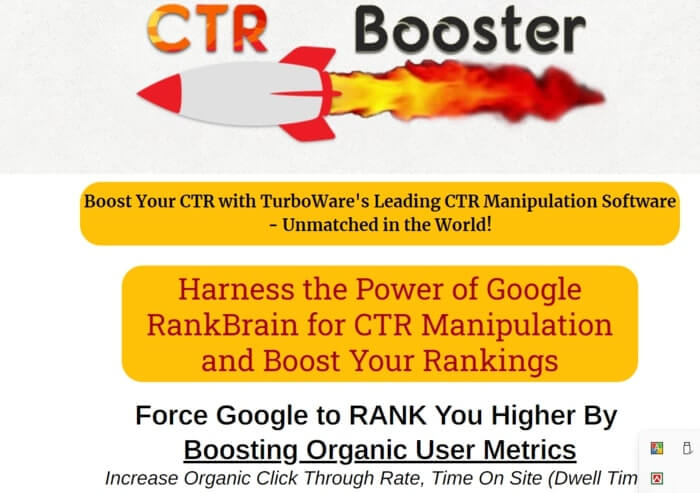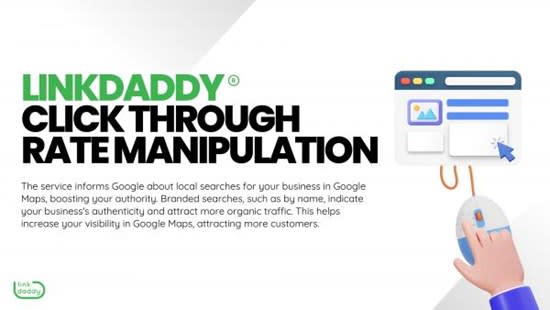Boost Your Online Existence with Effective CTR Manipulation Approaches
Wiki Article
Achieving Success With Targeted CTR Control
The optimization of click-through prices (CTR) is an essential endeavor for brands aiming to improve their digital presence and make the most of interaction. Targeted CTR adjustment incorporates a variety of approaches, from data-driven advertisement placements to the advancement of compelling web content tailored to specific target markets. Recognizing the subtleties of user behavior and using methods such as A/B testing can significantly influence efficiency end results. Nonetheless, the trip to grasping these tactics is intricate and calls for a recurring commitment to evaluation and refinement. The inquiry remains: what certain strategies will produce the most substantial lead to this vibrant landscape?Understanding Click-Through Rates
Click-through prices (CTR) function as an important statistics in electronic advertising and marketing, reflecting the effectiveness of on the internet material in driving customer interaction. This metric is calculated by dividing the number of clicks an ad or link obtains by the overall number of impressions, expressed as a percentage (CTR Manipulation). A greater CTR suggests that the content reverberates well with the target market, triggering them to take actionUnderstanding CTR is essential for marketers intending to optimize their projects. Various factors influence CTR, including advertisement placement, design, and the importance of the material to the target market's interests. Engaging headlines and visually appealing photos can substantially enhance the probability of customers clicking on a web link.
Moreover, the context in which the material is offered plays a critical function in establishing CTR. Eventually, a thorough understanding of CTR equips marketing experts to fine-tune their methods, making sure that digital projects attain their wanted end results efficiently.
Relevance of CTR Control
In the competitive landscape of electronic advertising, the control of click-through rates (CTR) has actually come to be an important method for enhancing project efficiency. CTR functions as a key efficiency indication, reflecting the efficiency of on-line ads and content in bring in user involvement. A higher CTR not only represents greater interest but also can cause enhanced search engine rankings and lower cost-per-click (CPC) prices, consequently enhancing overall advertising spending plans.The value of CTR adjustment hinges on its capability to inform marketing experts regarding client choices and actions. By evaluating CTR information, businesses can determine which components of their projects resonate most with their target market. This insight enables for even more educated decision-making and the appropriation of resources to one of the most reliable networks.
In addition, efficient CTR adjustment fosters a competitive advantage. Thus, mastering CTR manipulation is not simply useful; it is essential for accomplishing continual success in electronic marketing efforts.
Techniques for Targeted CTR
Attaining targeted click-through prices (CTR) needs a strategic technique that includes various strategies customized to specific target market sections. One efficient technique is optimizing ad positionings by using information analytics to identify high-performing channels. By focusing initiatives on these channels, marketers can boost presence and increase engagement.Another essential method is crafting engaging headlines and phones call to action (CTAs) A/B testing various variations can disclose which mixes resonate most with the target market, consequently driving higher CTR. Furthermore, incorporating aesthetic elements such as captivating photos or video clips can dramatically boost allure, making content more shareable and interesting.
Customization also plays a crucial function; utilizing customer data to produce customized material can foster a feeling of relevance, motivating clicks. Moreover, leveraging social evidence through testimonials and user-generated web content can develop depend on, eventually increasing CTR.
Analyzing Individual Actions
 Recognizing customer habits is important for optimizing advertising and marketing approaches and enhancing general performance. By evaluating just how individuals engage with content, marketing professionals can obtain beneficial insights into preferences, motivations, and pain points. This knowledge makes it possible for the growth of more targeted campaigns that resonate with details audience sectors.
Recognizing customer habits is important for optimizing advertising and marketing approaches and enhancing general performance. By evaluating just how individuals engage with content, marketing professionals can obtain beneficial insights into preferences, motivations, and pain points. This knowledge makes it possible for the growth of more targeted campaigns that resonate with details audience sectors.To efficiently analyze user habits, numerous tools and techniques can be utilized. Internet analytics systems give data on individual interaction metrics such as click-through prices, bounce rates, and time invested in page. Heatmaps and session recordings allow online marketers to envision user communications, disclosing which elements stand out and which may be ignored.
Furthermore, individual feedback with studies and comments kinds can provide qualitative understandings, improving the understanding of click here for more individual sentiment and fulfillment. Segmenting users based upon rate of interests, demographics, and habits can additionally refine targeting initiatives, tailoring content to fulfill diverse demands.
Inevitably, continual evaluation of user habits is vital for adapting advertising and marketing approaches in real-time. As individual trends develop, remaining attuned to these adjustments guarantees that campaigns continue to be effective and relevant, cultivating a deeper connection with the target market. This fundamental understanding sets the phase for the successful implementation of targeted CTR manipulation methods.
Determining Success and Adjusting Approaches
Determining success in targeted advertising and marketing campaigns calls for a calculated technique that incorporates performance metrics with recurring analysis. Trick performance signs (KPIs) such as click-through rates (CTR), conversion rates, and client procurement costs have to be kept an eye on constantly to determine the efficiency of manipulation methods. By developing a baseline, marketers can analyze changes in CTR and identify fads that show successful interaction or prospective imperfections.Consistently evaluating these metrics enables for the prompt change of techniques. If a certain campaign shows a significant drop in CTR, it may indicate the need for creative alterations or a reevaluation of targeting criteria. Using A/B testing can better improve methods by comparing variants of ads or touchdown web pages, offering insight into what reverberates finest with the target audience.
Additionally, integrating qualitative feedback informative post with surveys or user interviews can supplement measurable data, supplying an extensive sight of target market understanding. Inevitably, the capability to iteratively examine and refine techniques based upon real-time information cultivates a much more receptive advertising strategy, ensuring that projects remain straightened with service objectives and target market preferences. This adaptive technique is essential in achieving continual success in targeted CTR control.
Final Thought
Finally, targeted CTR control is important for optimizing electronic advertising and marketing efforts. By recognizing click-through rates and using tactical strategies, brand names can properly boost customer involvement and drive conversions. Continual evaluation of user behavior and thorough dimension of efficiency indications assist in timely changes, guaranteeing placement with customer preferences. Inevitably, successful CTR control not just increases visibility yet additionally fosters count on and credibility, therefore adding to sustained development in open markets.
 Targeted CTR control includes a variety of methods, from data-driven advertisement positionings to the advancement of engaging material customized to details audiences.Click-through prices (CTR) offer as an essential statistics in address electronic advertising, mirroring the efficiency of on the internet material in driving individual involvement. A greater CTR shows that the content resonates well with the target audience, motivating them to take activity.
Targeted CTR control includes a variety of methods, from data-driven advertisement positionings to the advancement of engaging material customized to details audiences.Click-through prices (CTR) offer as an essential statistics in address electronic advertising, mirroring the efficiency of on the internet material in driving individual involvement. A greater CTR shows that the content resonates well with the target audience, motivating them to take activity.CTR serves as a vital efficiency indicator, mirroring the performance of online promotions and web content in bring in individual interaction.In verdict, targeted CTR adjustment is important for optimizing electronic marketing efforts.
Report this wiki page